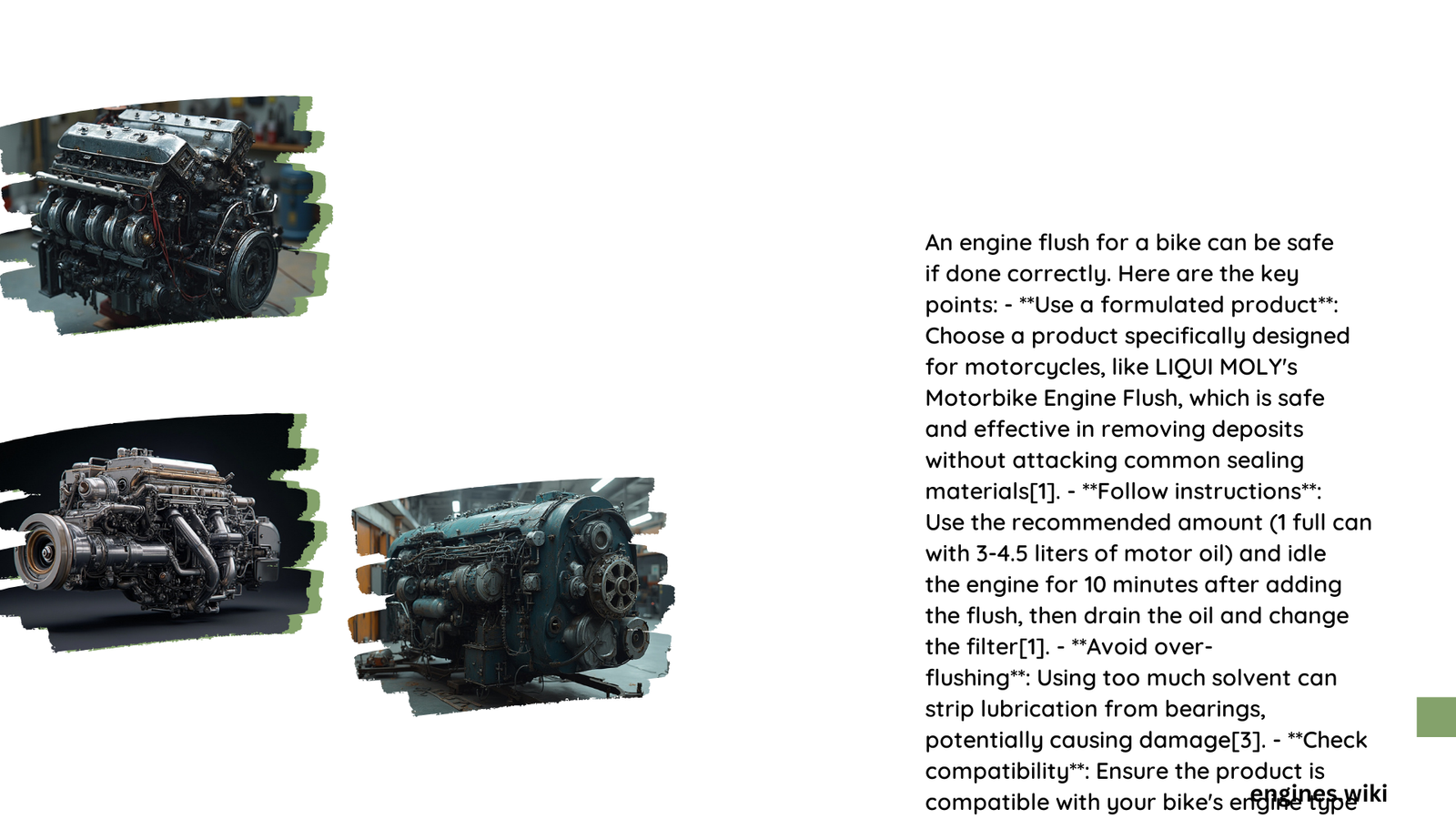Motorcycle engine flush can be a double-edged sword for bike owners. While it offers potential benefits like removing stubborn deposits and improving engine performance, it also carries risks of exposing underlying mechanical issues. Understanding the nuanced approach to engine flushing is crucial for maintaining your motorcycle’s health and preventing potential damage.
What Makes Engine Flush Controversial for Motorcycles?
Why Do Riders Consider Engine Flush?
Engine flush is a chemical solution designed to clean internal engine components by dissolving accumulated sludge, carbon deposits, and old oil residues. Motorcycle riders typically consider this process to:
- Improve overall engine performance
- Remove stubborn deposits
- Enhance oil circulation
- Potentially extend engine life
What Are the Potential Risks of Engine Flush?
| Risk Category | Potential Consequences | Mitigation Strategy |
|---|---|---|
| Seal Damage | Oil leaks in older engines | Use high-quality flush products |
| Sediment Disruption | Clogged oil passages | Professional application |
| Hidden Mechanical Issues | Exposure of existing problems | Comprehensive engine inspection |
How to Determine If Your Motorcycle Needs an Engine Flush?
Indicators Suggesting Engine Flush Requirement
- Oil Condition
- Dark, thick oil after minimal usage
- Visible contaminants in oil
-
Reduced oil viscosity
-
Performance Symptoms
- Decreased engine efficiency
- Unusual engine noise
- Reduced fuel economy
- Rough idling
What Expert Mechanics Recommend?
Experienced motorcycle technicians suggest a cautious approach:
- For New Motorcycles: Generally unnecessary
- For Older Bikes: Evaluate based on maintenance history
- High-Mileage Motorcycles: Consult professional mechanic before flushing
Which Engine Flush Products Are Considered Safe?
Top Recommended Products
- AMSOIL Engine and Transmission Flush
- Valvoline Engine Flush
- Lucas Engine Flush
- Royal Purple Engine Flush
How to Safely Perform an Engine Flush?
Step-by-Step Professional Approach
- Warm up the motorcycle engine
- Add recommended flush product
- Idle engine for specified duration
- Drain completely
- Replace with fresh, high-quality oil
- Install new oil filter
What Precautions Should You Take?
Critical precautions include:
– Use manufacturer-recommended products
– Follow precise application instructions
– Never exceed recommended idle time
– Monitor engine performance post-flush
– Maintain regular service intervals
Can Engine Flush Replace Regular Maintenance?
Absolutely Not!
– Engine flush is a supplementary procedure
– Cannot substitute routine oil changes
– Should be used sparingly and strategically
What Are Alternative Engine Cleaning Methods?
Alternative approaches include:
– Regular oil changes
– Using high-quality synthetic oils
– Periodic professional engine inspections
– Following manufacturer’s maintenance schedule
Final Technical Insights

While engine flush can be beneficial, it’s not a universal solution. Each motorcycle has unique requirements based on:
– Engine design
– Riding conditions
– Maintenance history
– Age of the motorcycle
Professional assessment remains the most reliable method to determine whether an engine flush is appropriate for your specific motorcycle.
